Tooth Extractions
From wisdom tooth removal to pulling teeth due to damage or infection, Yazdani Family Dentistry is the trusted source for tooth extractions in Kanata and Kemptville. We'll do everything possible to make your experience as pain-free and comfortable as possible.
To Book an Appointment
WHEN TEETH Need to Be PULLED
A Tooth Extraction in Kanata May Be the Only Option
The removal of a tooth (known as an extraction), is sometimes the only option that’s possible when faced with a severely decayed or damaged tooth. Whenever we can, we will try to save a tooth with a filling, crown, or other restorative treatment, but in times when the tooth is in such bad condition that it can’t be repaired, then a tooth extraction procedure is necessary to avoid infection and more serious dental and health issues down the road.
In cases like this, Yazdani Family Dentistry provides tooth extraction procedures that keep your comfort and recovery in mind. Our Kanata dentists & Kemptville dentists will aim to make your tooth extraction procedure as pain-free as possible.
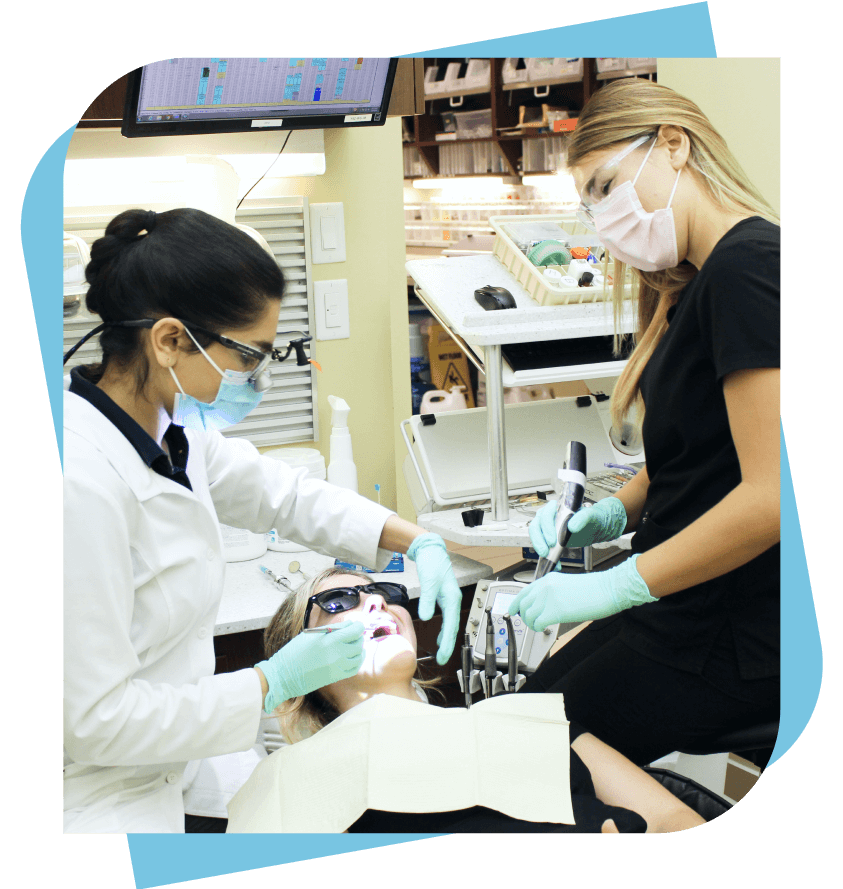
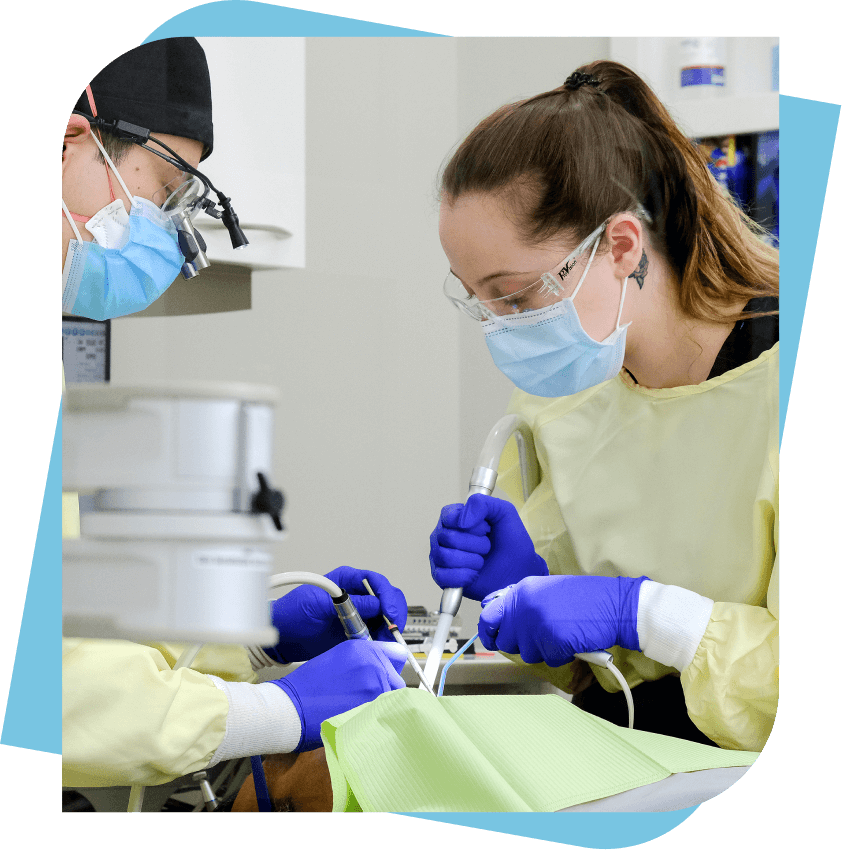
TOOTH EXTRACTIONS IN KEMPTVILLE
What Occurs to Necessitate Tooth Extraction?
When decay has reached down into the root of a tooth or if an infection has destroyed a large portion of bone around a tooth, a tooth extraction is often necessary to prevent the decay and infection from spreading to nearby teeth and bone structures. A patient may have an impacted tooth or crowded teeth that can cause a number of issues, including severe pain and inflammation. Crowded teeth are also more difficult to clean which increases the risk of tooth decay and infection.
Through X-rays and our specialized diagnostic methods, our Kanata dentists and Kemptville dentists can determine if a tooth can be preserved or if it needs to be removed. In cases such as extreme tooth decay, damage, or injury where the structure and stability of a tooth is severely compromised, tooth extraction is the only solution to treat the issue and keep it from spreading to surrounding teeth, gum tissue and bone structures. That being said, Kemptville tooth extractions are always a last resort. Before we decide, our team considers all relevant treatment options to see if we can preserve the tooth instead.
DO YOU REQUIRE
Emergency Dental Services?
Our clinics offer same-day appointments for your emergencies. If you need a dentist to help you in a crisis, please do not hesitate — call us right away!
TOOTH EXTRACTIONS IN KANATA
What Do We Look for
Before Pulling Teeth?
There are both surgical and straightforward (simple) types of extractions. A tooth that is impacted below the gum line typically requires a surgical tooth extraction procedure. Patients are provided with a local anesthetic, and sedation if needed, to ensure they are as comfortable as possible during the procedure. For a tooth that is visible, our Kanata dentists and Kemptville dentists will select a very specific tool depending on which tooth needs to be extracted. They will then use it to loosen the tooth in the gums before pulling it out. That way they won't need to apply as much force when they pull the tooth out of your mouth. This is what makes Yazdani Family Dentistry your best option for Kanata tooth extractions.
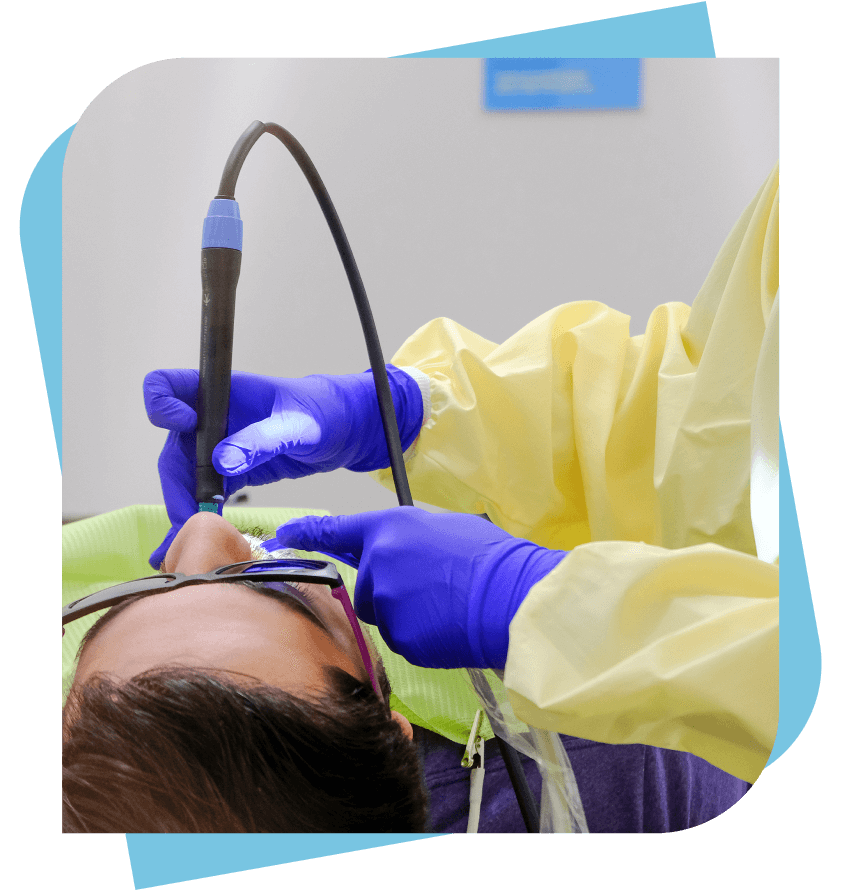
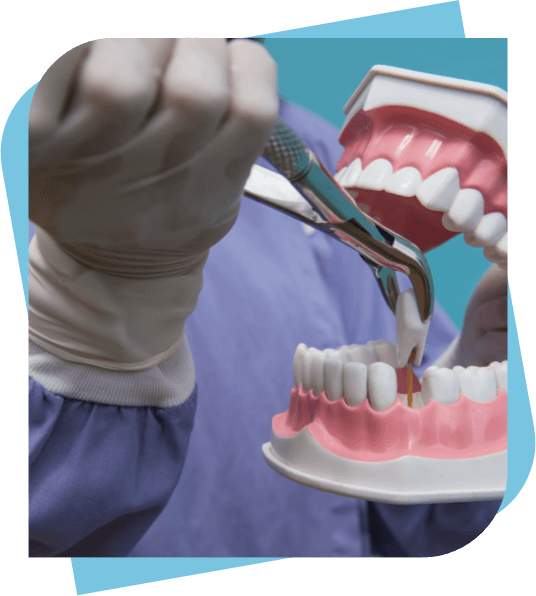
AFTER THE TOOTH EXTRACTION
Afterwards: Fixing the
Gap in Your Teeth
We have a number of options available to fill the gap left by a tooth extraction — dental bridges, crowns, dental implants, and even dentures. As we monitor your recovery following the tooth extraction procedure, our dentists will analyze the condition of your mouth to find the best solution for you.
If you need a tooth extracted in Kanata or Kemptville, you’re in safe hands at Yazdani Family Dentistry. Our Kanata dentists and Kemptville dentists take all necessary measures to ensure you have a secure and comfortable experience no matter what the procedure is. Call us today to set up an appointment.
Why Wisdom Tooth Extractions Are Necessary
Most adults have four wisdom teeth that grow at the back of their mouth, and generally appear between the ages of 17 and 25. For some people, wisdom teeth are able to grow in normally. For others, any number of these wisdom teeth might not have enough room to grow in properly. When this is the case, the wisdom tooth becomes impacted. An impacted tooth can grow in a number of ways:
- At an angle towards the neighbouring tooth
- At an angle towards the back of the mouth
- Grow at a 90 degree angle towards the neighbouring tooth as it's laying within the jawbone.
- Straight up or down while remaining trapped in the jawbone.
In some cases, an impacted wisdom tooth might not cause any complications. In other cases, complications arise later in life. In most cases, it is best to have an impacted wisdom tooth extracted to prevent any dental emergencies from arising in the future.


Issues Caused By Impacted Wisdom Teeth
- Pain in the mouth & jaw.
- Food & debris becoming trapped behind the impacted wisdom tooth.
- Infection and/or gum disease
- Tooth decay if the wisdome tooth has partially erupted (exposed through the gums).
- Damage to the neighbouring tooth and surrounding bone structure.
- Development of cysts around the wisdom tooth
- Negative impact on orthodontic treatments to straighten teeth like braces and Invisalign.
Preventative Wisdom Tooth Extractions
Extracting wisdom teeth for preventative reasons is something that is often recommended. Just because impacted wisdom teeth aren't causing problems at the moment doesn't mean they won't in the future. Impacted wisdom teeth can still harbour disease even if someone is asymptomatic, and older adults are more likely to experience complications with the extraction procedure and recovery process. it is generally best to remove impacted wisdom teeth early, while it is easiest.
Preparing For The Wisdom Tooth Removal Procedure
There are a few things a dentist or oral surgeon will ask a patient to do in the days leading up to the wisdom tooth removal procedure:
Preparing The Home For Recovery
Once the procedure is complete, patients will be required to rest and recover for a few days. Making sure the home is set up and ready for patients to be comfortable while they recover helps the process. They will also be limited to soft foods and beverages for the initial days of recovery, so stocking up on things like smoothies, ice cream and mashed potatoes before hand is a good idea.
Discussing Medical History
Patients will need to discuss aspects of their medical history with the dentist or oral surgeon. They will need to discuss prescription medications and whether they can be taken before the procedure, as well as their history of recreational drug and alcohol use. These are things that can have an impact on a patient's ability to handle dental sedation properly and the dentist or oral surgeon will need to know this information to decide on the best course of action for the procedure.


The Day Before Your Procedure
It is important for patients to arrange a ride to and from the clinic as they will not be allowed to drive themselves due to the effects of the dental sedation. This could be a family member, a friend, coworker, taxi or rideshare app like Uber. Under no circumstances are patients allowed to drive following a wisdom tooth removal procedure.
Smokers will be asked to refrain from smoking for the 12 hours leading up to the procedure. Smoking can cause the patient to require more anesthetic to be sedated which presents a greater risk to the patient. Better yet, patients should use this as an opportunity to quit smoking.
Finally, patients will be asked not to eat anything after midnight on the day before their procedure. This recommendation is made for the safety of the patient. Receiving anesthetic when there is food in the stomach increases the risk of that food being regurgitated while lying in the dental chair. In this position, the regurgitated food can make its way into the patient's airway more easily and cause major complications or even suffocation.
The Wisdom Tooth
Removal Procedure
A wisdom tooth removal procedure is a surgical procedure that is performed by a dentist or oral surgeon. It is generally performed as an outpatient procedure which means patients can go home after surgery. The procedure for wisdom tooth removals can be broken down into these eight steps:
- Step 1: The dentist or oral surgeon administers dental sedation if necessary.
- Step 2: An incision is made in the gums to expose the tooth and bone.
- Step 3: Bone that is blocking the root of the tooth is removed if necessary.
- Step 4: The tooth is divided into smaller pieces if it is easier to remove that way.
- Step 5: The tooth is removed.
- Step 6: The site of the removed tooth is cleaned to remove any debris from the bone or tooth.
- Step 7: The removal site is stitched closed to promote healing.
- Step 8: Gauze is placed on the stitched removal site to control bleeding and help a blood clot to form.
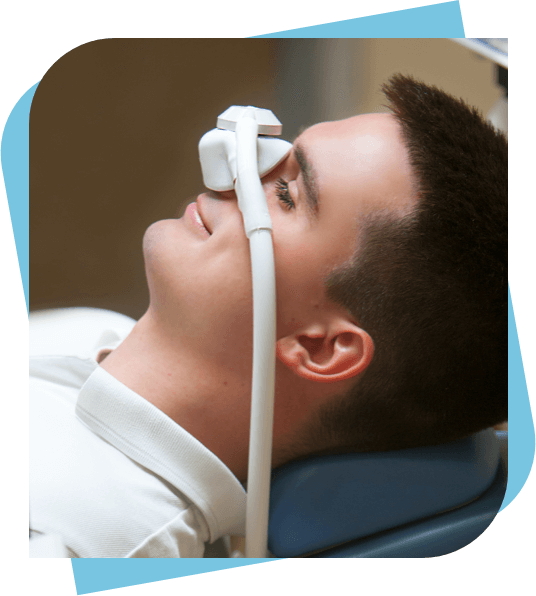
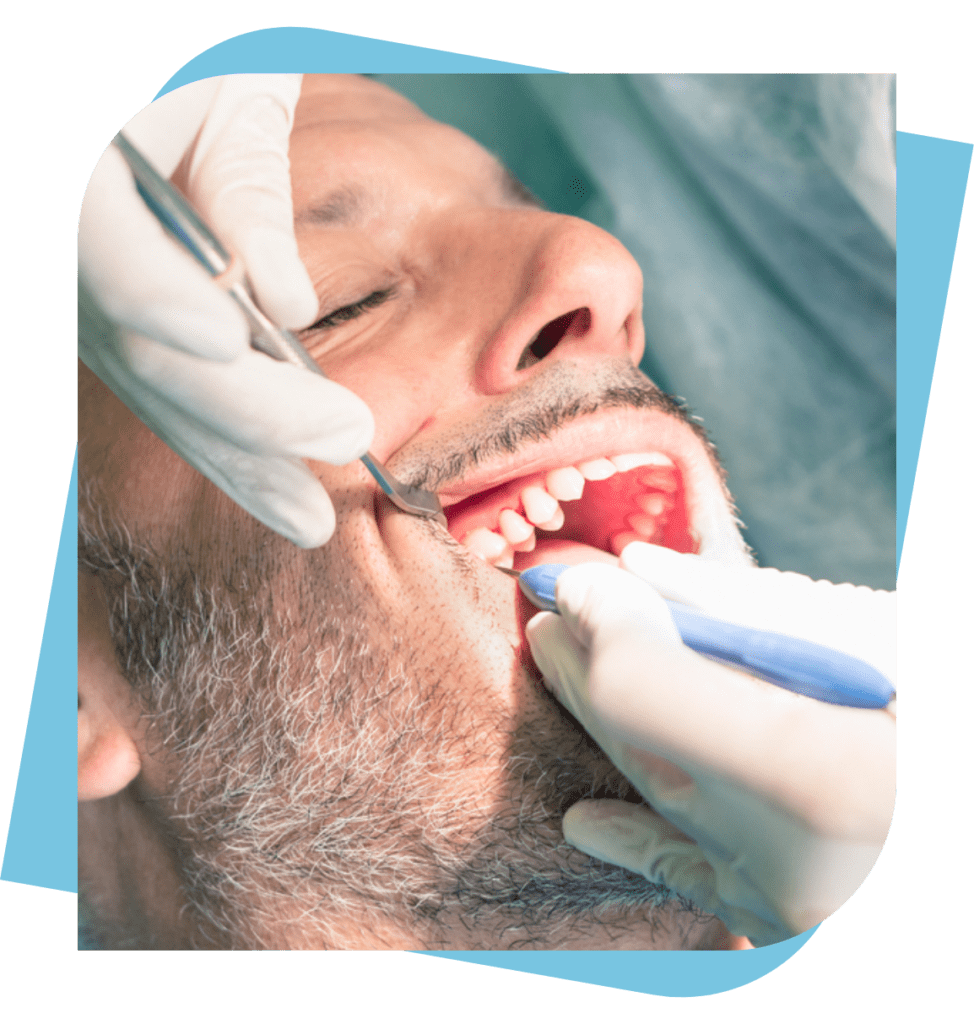
After The Wisdom Tooth Extraction Procedure
In order to make the recovery process go as smoothly as possible, there are a few instructions that a dentist or oral surgeon will give to the patient.
Manage Bleeding
Some bleeding for the first couple of days following wisdom tooth removal is normal. Simply replace the gauze on the extraction site as directed by the dentist or oral surgeon. It is also important to avoid excessive spitting or sucking on things like candy or straws to keep the blood clot from becoming dislodged.
Pain Management
Some pain and discomfort following the procedure is also a normal occurrence, especially if bone has been removed. Pain can be managed by using an ice pack on the site to reduce swelling, taking over the counter pain medications like Tylenol or Advil, or other pain medications can be prescribed. It is imperative for patients to discuss options with their doctor and dentist and follow their instructions when taking any medications.
Avoid Strenuous Activity
After the procedure, patients can expect to be told to stay in bed and rest for the rest of the day. They can return to normal activities the next day, but will need to avoid heavy lifting and other strenuous activities that could cause the blood clot to become dislodged.
Food & Beverages
Patients will need to alter their diet following the procedure. For the first 24 hours, only soft foods like apple sauce, yogurt and ice cream can be eaten. Semi-soft foods can be worked in after that as the patient's ability to tolerate it without pain increases. Hard, chewy, hot and spicy foods should be avoided as they can cause irritation in the extraction site.
Patients should drink plenty of water while they are in recovery. For the first 24 hours following the procedure, patients should avoid carbonated drinks, caffienated drinks, hot drinks and alcoholic beverages. They should also avoid drinking from a straw as the sucking action can cause the blood clot to become dislodged.


Tobacco Use
While it is best to quit using tobacco products entirely, patients will need to abstain from consuming them following their wisdom tooth removal procedure. Tobacco products slow down the healing process, and increase the risk of complications arising. Smokers need to avoid cigarettes for at least 72 hours, while chewing tobacco users will need to wait at least a week before resuming use.
Oral Care
For the first 24 hours following the procedure, patients will be told to not rinse, spit or brush their teeth. This is a crucial time where a blood clot needs to form in the extraction site and these things can delay that from happening. Beyond the first 24 hours, patients will need to be careful when brushing around the extraction site and only use a soft-bristled toothbrush with gentle strokes in the area. Patients will also find rinsing their mouth with warm salt water every couple of hours and after meals for a week is helpful for their recovery.
When to Contact The Dentist
Patients who experience the following complications following their wisdom tooth extraction must contact their dentist right away for an assessment and treatment.
- Difficulty swallowing or breathing.
- Excessive bleeding.
- Fever.
- Severe pain that isn’t relieved by pain medications.
- Swelling that gets worse after two to three days.
- A bad taste that isn’t fixed by a salt water rinse.
- Pus discharge from the socket.
- Persistent numbness.
- Blood or pus in nasal discharge.

COMFORT & PEACE OF MIND
Our Focus is on Your
Wellness
When you visit our Carleton Place dental office for your extraction appointment, know that we take your comfort and peace of mind very seriously. We’ll work closely with you to ensure you’re at ease and calm before, during, and after the procedure. Having a tooth removed can come as a visual shock to some, so our team is also trained in post-surgical guidance and will provide you with tips on taking care of the gapped area leading up to the installation of a permanent solution. We keep the patient comfortable and informed every step of the way.
Do you need a tooth extracted or want to sign up as a new patient? Contact us at Costello Family Dentistry today to get in touch with our dedicated and friendly team.


Tooth Extractions
Frequently Asked Questions
We get a lot of questions, naturally, about the wide range of dental services we perform here at our Kanata & Kemptville dental clinics. Here are the answers to the most frequently asked questions. Don't see yours answered here? Feel free to reach out to Yazdani Family Dentistry.
After you have had an extraction, it is normal to feel some pain once the anesthetic wears off. For a few days after, it is common to experience some swelling around the empty socket and in the cheek covering the socket. Your dentist will provide you with instructions to care for the socket during the healing process.
There are several ways to speed up the healing time which your dentist will provide detailed instructions for. These may include:
- Eating softer foods.
- Avoiding smoking and spitting for 2 to 3 days.
- Not drinking through straws for 24 hours after extraction.
- Icing the affected area to sooth pain and reduce swelling.
- Eating and drinking things that are only moderate in temperature.
- Placing gauze on the area and biting down with pressure to reduce bleeding.
- Avoiding aspirin and other blood thinning medications for a few days.
- Rinsing your mouth with warm salt water instead of mouthwash.
It is also important to avoid the area when brushing your teeth for a few days to avoid re-opening the wound.
There are a few signs of infection after having a tooth removed. If you experience any of these symptoms, contact your doctor or dentist as soon as possible.
- Bleeding more than 24 hours after extraction.
- Throbbing pain that isn’t relieved by pain medication.
- Extreme swelling of the face, jaw or gums.
- Oozing pus from the extraction site.
- Difficulty opening your mouth.
- Low-grade fever that persists or increases over time.
Dry socket is a condition that occurs when a blood clot at the site of a tooth extraction fails to form, or becomes dislodged before the wound fully heals. This makes the extraction site more susceptible to infection, and can be accompanied by severe pain at the extraction site. A patient who is experiencing dry socket will need to see their dentist for an assessment and treatment including flushing the socket with a saline solution, and applying medical dressings to alleviate the pain and prevent infection.





